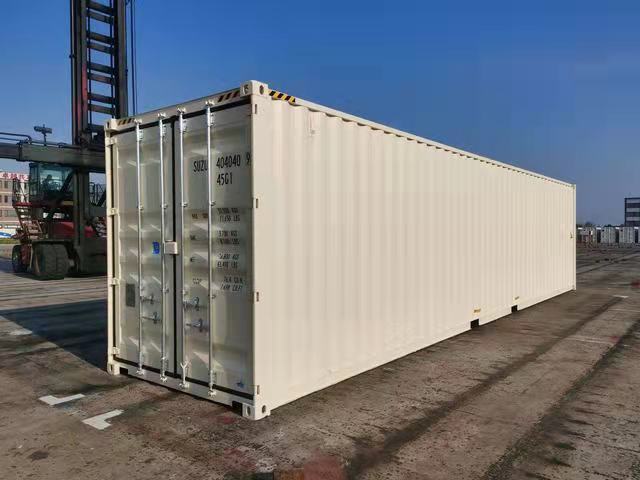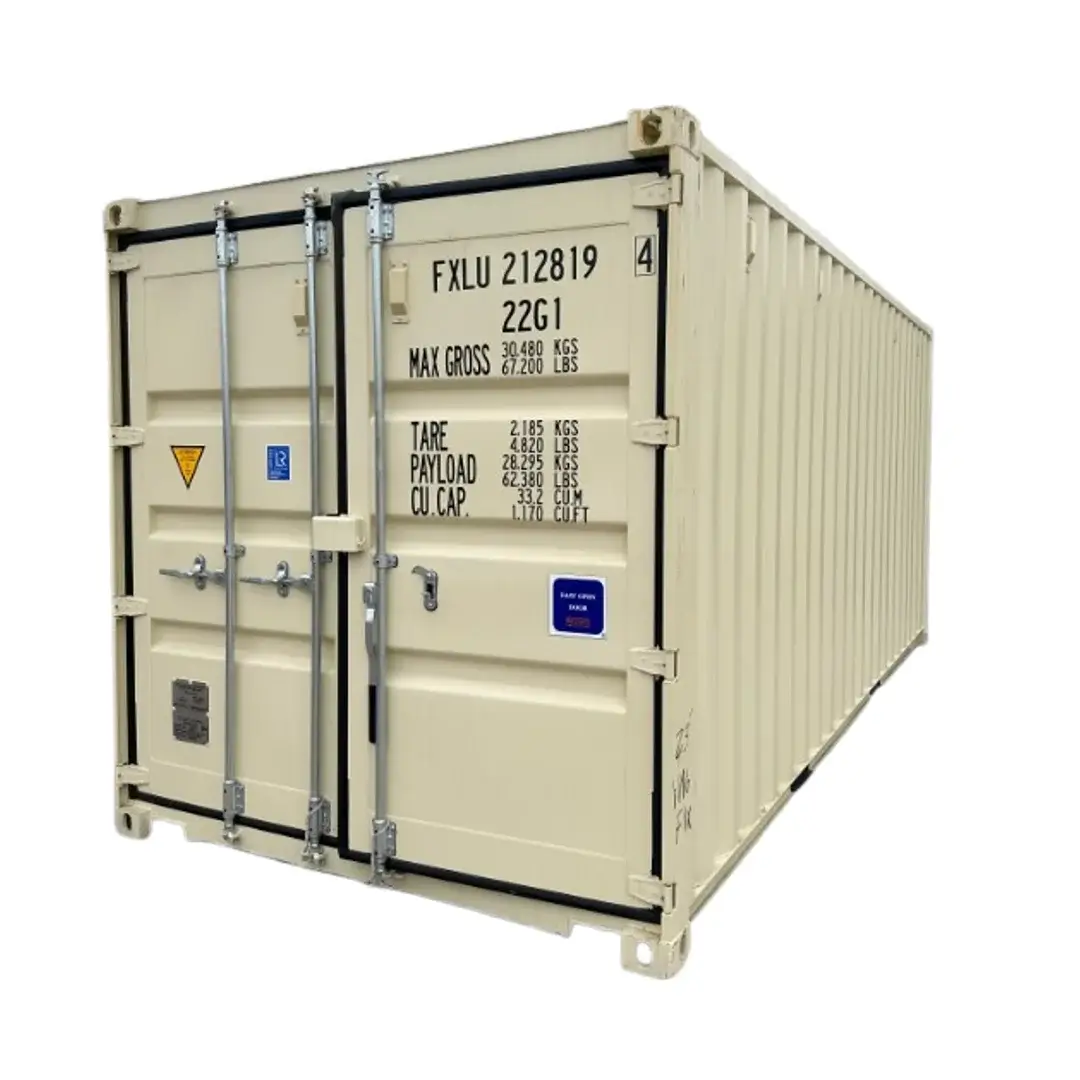The Ultimate Overview to Selecting the Right Shipping Container for Your Requirements
When it comes to picking the best delivery container, understanding your certain demands is important. You'll want to consider factors like dimension, kind, and material to ensure you make the ideal selection. From basic sizes to specialized alternatives, there's a great deal to discover. And also, budgeting for both the container and any adjustments can make a large distinction. Allow's damage down the vital facets to aid you locate the ideal fit for your demands.
Comprehending Delivery Container Sizes
When you're selecting a shipping container, recognizing the numerous sizes offered is vital for making the appropriate decision. Delivering containers commonly are available in conventional sizes of 20 and 40 feet, but you'll additionally find various other dimensions. Understanding the dimension you need depends on what you plan to store or transport.If you're relocating smaller products, a 20-foot container may be excellent, while larger shipments often need a 40-foot container. The elevation can also differ; high cube containers supply added upright room, which can be useful for taller goods.Before choosing, gauge your freight, and take into consideration just how much area you'll require for packing and dumping. Constantly consider prospective future requirements-- deciding for a somewhat larger container may save you inconvenience down the line. Eventually, selecting the appropriate size will certainly improve effectiveness and guarantee your things are safe during transportation
Kinds Of Shipping Containers Available
There are numerous kinds of delivery containers offered, each made for specific objectives and cargo requirements. The basic dry container is functional, perfect for general cargo. If you're shipping perishable items, think about a refrigerated container, which keeps a regulated temperature level. For oversized products, high cube containers supply added elevation, suiting taller loads.If you need to carry hefty machinery or equipment, level rack containers supply a strong base without wall surfaces. Meanwhile, open-top containers allow for simple loading of high freight, with a detachable tarpaulin covering for defense. If you're seeking flexibility, think about a retractable container that can be easily kept when not in use.Lastly, specialized containers like tank containers are utilized for fluids, while vented containers are created for bulk freight that requires ventilation. Understanding your freight type will certainly help you select the appropriate container to fulfill your delivery needs efficiently.
Product Factors To Consider for Longevity
When picking a delivery container, the material plays a vital role in its sturdiness. You'll wish to consider the benefits of steel versus light weight aluminum, specifically regarding corrosion resistance. Understanding these factors can help you make an extra informed selection for your shipping needs.
Steel vs. Aluminum Containers
Just how do you choose between steel and aluminum containers for your shipping needs? Beginning by taking into consideration resilience. Steel containers are robust and offer superb toughness, making them perfect for hefty lots and harsh problems. They withstand damage from influences and are frequently less costly, which can be a major aspect for budget-conscious buyers.On the other hand, light weight aluminum containers are light-weight, which can conserve you on delivery costs. They're much easier to navigate and are a terrific choice if you require to transfer goods regularly. Aluminum is generally a lot more costly and less durable than steel. Weigh your particular demands meticulously, including weight, price, and the sort of cargo you'll be delivery, to make the appropriate option for your circumstance.
Corrosion Resistance Elements
Choosing the ideal material does not just involve weight and price; deterioration resistance plays a substantial duty in durability. When selecting a delivery container, think about the environment it'll deal with. Steel containers, while strong, can corrosion if not properly treated. Look for alternatives with protective coatings or galvanization to boost their lifespan. Light weight aluminum, on the other hand, uses all-natural deterioration resistance, making it perfect for seaside locations or humid conditions. It can be much more costly. Furthermore, analyze the container's use-- if it'll be revealed to chemicals or rough weather condition, focus on products that can withstand these conditions. Investing in a corrosion-resistant container currently can conserve you from costly repairs or substitutes down the line. Select sensibly for lasting advantages.
Adjustments and Customization Options
Delivering containers aren't just for moving products; they can be transformed to fulfill your particular requirements through different adjustments and modification alternatives. You can transform a conventional container right into a comfortable office, a momentary retail shop, and even a personal fitness center. The visit homepage opportunities are almost endless.Think regarding including home windows, insulation, or air flow to improve comfort. You could additionally consider electrical wiring, pipes, or even custom shelving to improve functionality. If safety's an issue, reinforced locks can offer peace of mind.For visual charm, you can repaint the container or include a special style to make it stick out. Do not forget floor covering options-- whether you want resilient plywood or something more innovative, it can elevate the space.Ultimately, tailoring your delivery container to match your demands can boost use and create a distinct setting that shows your style.
Analyzing Your Transportation Needs
When visit this web-site it involves using your modified shipping container, understanding your transportation requires is essential. Begin by establishing what you'll be delivery-- whether it's heavy equipment, retail goods, or personal products. Each sort of cargo has various needs concerning size, weight, and accessibility.Next, think about the range and setting of transportation. Are you delivering in your area, nationally, or worldwide? This impacts the container's style and capability. If you're utilizing vehicles, assure your container fits standard dimensions for very easy loading and unloading.Additionally, believe regarding transit problems. Will your products need unique security from weather or temperature level fluctuations? If so, you could require insulation or air flow functions in your container.Lastly, analyze exactly how often you'll be transferring products. Frequent shipments may call for an extra durable and functional container to meet recurring needs. By resolving these factors, you'll be well-prepared to choose the right shipping container for your needs.
Budgeting for Your Delivery Container
Setting a spending plan for your delivery container is crucial for making sure a smooth investing in procedure. First, his response figure out just how much you can manage to invest. Keep in mind that prices can differ considerably based on dimension, condition, and kind. New containers typically set you back extra, but made use of ones can offer substantial savings.Next, think about any type of additional expenses you might sustain, such as transportation costs, distribution costs, and modifications. If you prepare to tailor the container, consider those expenses as well. Research study various distributors to compare costs and locate the most effective bargain that fulfills your needs.Don' t neglect to include any type of authorizations or regulations that may put on your purchase and use the container. By plainly outlining your budget plan, you'll be much better prepared to make informed choices, ensuring you get the best container without damaging the bank.
Maintenance and Take Care Of Durability
To assure your delivery container lasts for many years, regular upkeep is key. Start by checking the exterior for corrosion, damages, and damage. If you find any problems, resolve them right away to stop more degeneration. Tidy the container regularly, both in and out, to eliminate dirt, debris, and wetness that can cause corrosion.Ensure the doors secure appropriately and oil the joints to prevent corrosion and sticking. If you're utilizing the container for storage, consider including air flow to decrease moisture and mold development. For extra protection, apply a rust-inhibiting paint or sealant annually.If your container's located in a rough environment, like seaside locations, you might require to enhance maintenance frequency. Keep an eye on the floor covering, also; any kind of indications of wear must be repaired right now. With these simple actions, you'll expand the life of your shipping container considerably.
Regularly Asked Questions
Exactly how Do I Discover a Trusted Shipping Container Vendor?
To locate a reputable delivery container provider, start by looking into on-line reviews, requesting suggestions from buddies or sector get in touches with, and contrasting costs. Constantly inspect their credentials and assurance they use quality containers that satisfy your demands.

Can I Rental Fee a Delivery Container As Opposed To Acquiring?
Yes, you can most definitely lease a delivery container instead of purchasing one. Many suppliers use rental choices, which can conserve you money and provide adaptability if you just need it for a short period.
What Permits Are Needed for Container Positioning?

Are Delivery Containers Weatherproof and Appropriate for Outdoor Storage Space?
Yes, delivering containers are usually weatherproof, designed to stand up to extreme conditions. Their robust construction keeps your products safe and dry, making them suitable for exterior storage. Simply ensure correct air flow to stop dampness build-up inside.
Just how Do I Transport a Delivery Container As Soon As Acquired?
